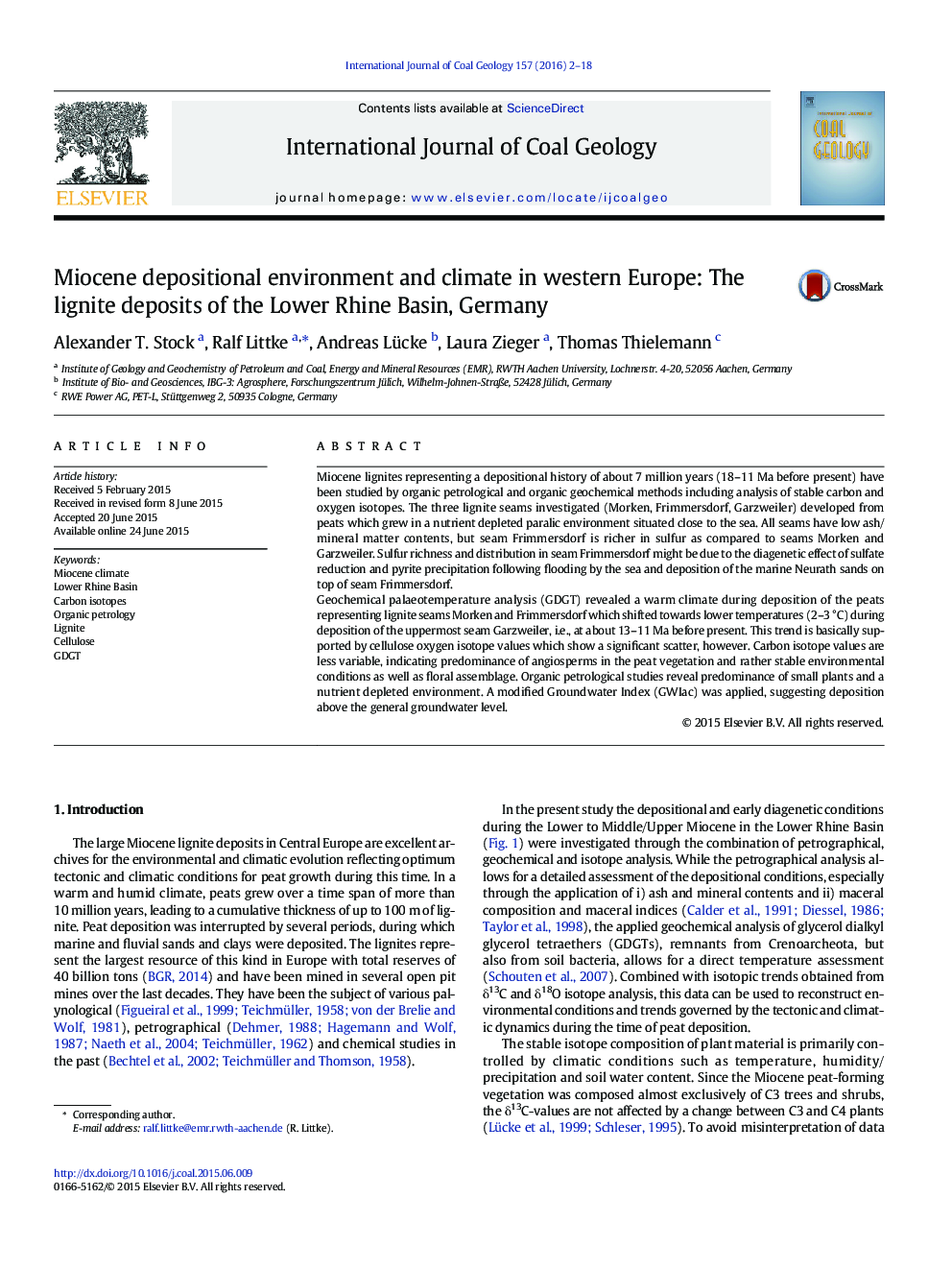| کد مقاله | کد نشریه | سال انتشار | مقاله انگلیسی | نسخه تمام متن |
|---|---|---|---|---|
| 1752831 | 1522545 | 2016 | 17 صفحه PDF | دانلود رایگان |
• Lignites were analyzed using geochemical, micropetrographical and isotope analysis.
• A modified groundwater index is introduced based on ash content and micropetrography.
• Strong pore water exchange influenced peat/lignite composition.
• Temperatures based on GDGTs reveal a cooling trend initiated in the Upper Miocene.
• Isotopic trends support angiosperm-dominated flora and changing climate.
Miocene lignites representing a depositional history of about 7 million years (18–11 Ma before present) have been studied by organic petrological and organic geochemical methods including analysis of stable carbon and oxygen isotopes. The three lignite seams investigated (Morken, Frimmersdorf, Garzweiler) developed from peats which grew in a nutrient depleted paralic environment situated close to the sea. All seams have low ash/mineral matter contents, but seam Frimmersdorf is richer in sulfur as compared to seams Morken and Garzweiler. Sulfur richness and distribution in seam Frimmersdorf might be due to the diagenetic effect of sulfate reduction and pyrite precipitation following flooding by the sea and deposition of the marine Neurath sands on top of seam Frimmersdorf.Geochemical palaeotemperature analysis (GDGT) revealed a warm climate during deposition of the peats representing lignite seams Morken and Frimmersdorf which shifted towards lower temperatures (2–3 °C) during deposition of the uppermost seam Garzweiler, i.e., at about 13–11 Ma before present. This trend is basically supported by cellulose oxygen isotope values which show a significant scatter, however. Carbon isotope values are less variable, indicating predominance of angiosperms in the peat vegetation and rather stable environmental conditions as well as floral assemblage. Organic petrological studies reveal predominance of small plants and a nutrient depleted environment. A modified Groundwater Index (GWIac) was applied, suggesting deposition above the general groundwater level.
Journal: International Journal of Coal Geology - Volume 157, 1 March 2016, Pages 2–18
